Invented by Xiaoqian Liu, Beijing Baidu Netcom Science and Technology Co Ltd
Speech control in VR refers to the ability to control and navigate virtual worlds using voice commands. Instead of relying on traditional input devices like controllers or keyboards, users can simply speak commands or engage in natural language conversations to interact with the virtual environment. This technology holds immense potential for a wide range of applications, from gaming and entertainment to education and training.
One of the key drivers of the market for VR speech control apparatus and methods is the desire for more immersive experiences. By eliminating the need for physical controllers, speech control allows users to fully immerse themselves in the virtual world without any distractions. This not only enhances the overall experience but also opens up new possibilities for realistic simulations and training scenarios.
Another factor contributing to the growth of this market is the increasing adoption of VR in various industries. From healthcare and education to architecture and engineering, VR is being utilized in diverse fields to improve productivity, training, and collaboration. Speech control offers a more intuitive and efficient way for professionals to interact with virtual models, manipulate objects, and perform complex tasks.
Furthermore, the advancements in natural language processing (NLP) and machine learning have significantly improved the accuracy and responsiveness of speech control systems. These technologies enable VR platforms to understand and interpret user commands more effectively, making the overall experience more seamless and user-friendly. As the accuracy and reliability of speech control continue to improve, the market is expected to witness further growth.
The gaming industry is also a major driver of the market for VR speech control apparatus and methods. Gamers are always seeking more immersive and interactive experiences, and speech control provides a new level of engagement. By enabling players to communicate with virtual characters and control the game environment using their voice, speech control adds a whole new dimension to gaming. This has led to the development of dedicated VR gaming platforms and accessories that leverage speech control technology.
However, there are still some challenges that need to be addressed for the widespread adoption of VR speech control. One of the main concerns is privacy and security. As speech control systems rely on voice recognition and processing, there is a need to ensure that user data is protected and not misused. Additionally, there is a learning curve associated with speech control, and users may need time to adapt to this new mode of interaction.
In conclusion, the market for VR speech control apparatus and methods is poised for significant growth in the coming years. The demand for more immersive and intuitive VR experiences, coupled with advancements in technology, is driving the adoption of speech control in various industries. As the accuracy and reliability of speech control systems continue to improve, we can expect to see a wider range of applications and innovations in this space.
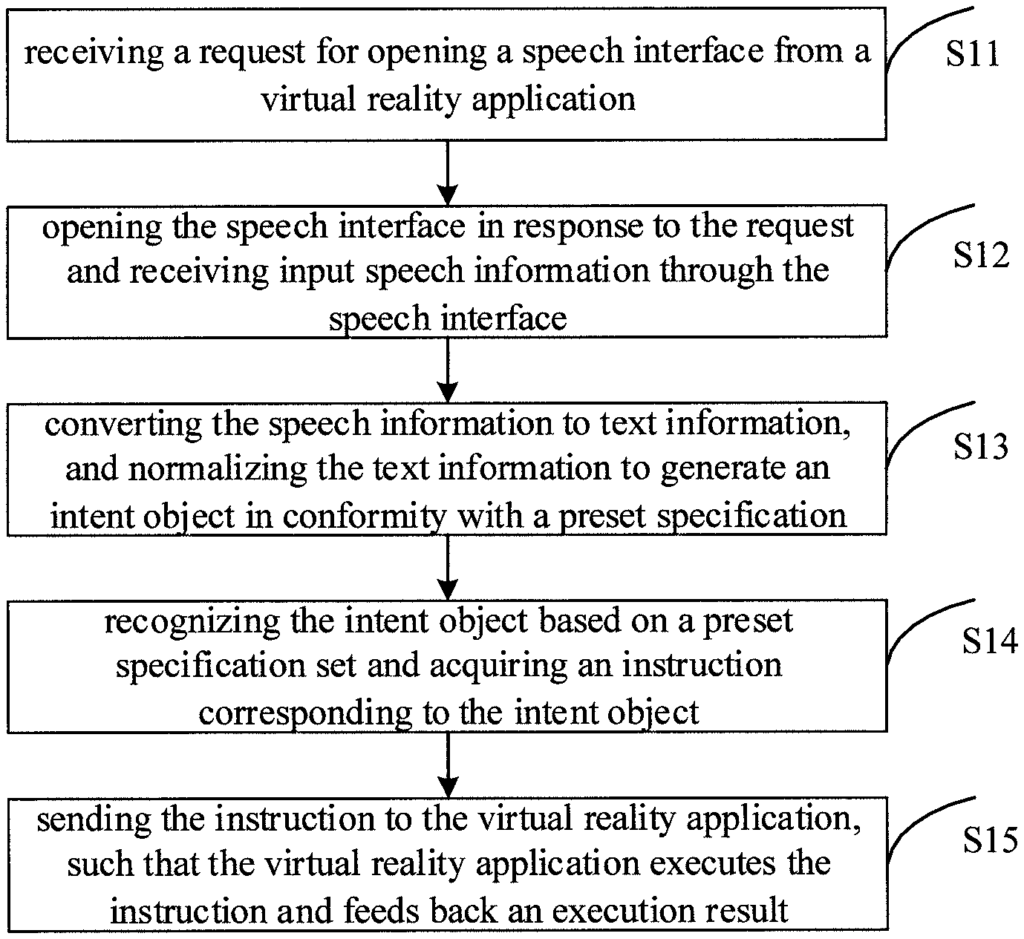
The Beijing Baidu Netcom Science and Technology Co Ltd invention works as follows
The present disclosure provides a virtual reality speech control apparatus and method. The method comprises: receiving a request from a VR app to open a voice interface; opening the interface and receiving input through the interface; converting speech data to text and normalizing it to create an intent object that conforms to a predefined specification; recognizing and acquiring the intent object using a set of preset specifications and acquiring the instruction corresponding to that intent object; and sending the instruction back to the VR app, so that the VR app executes the instructions and provides an execution result.
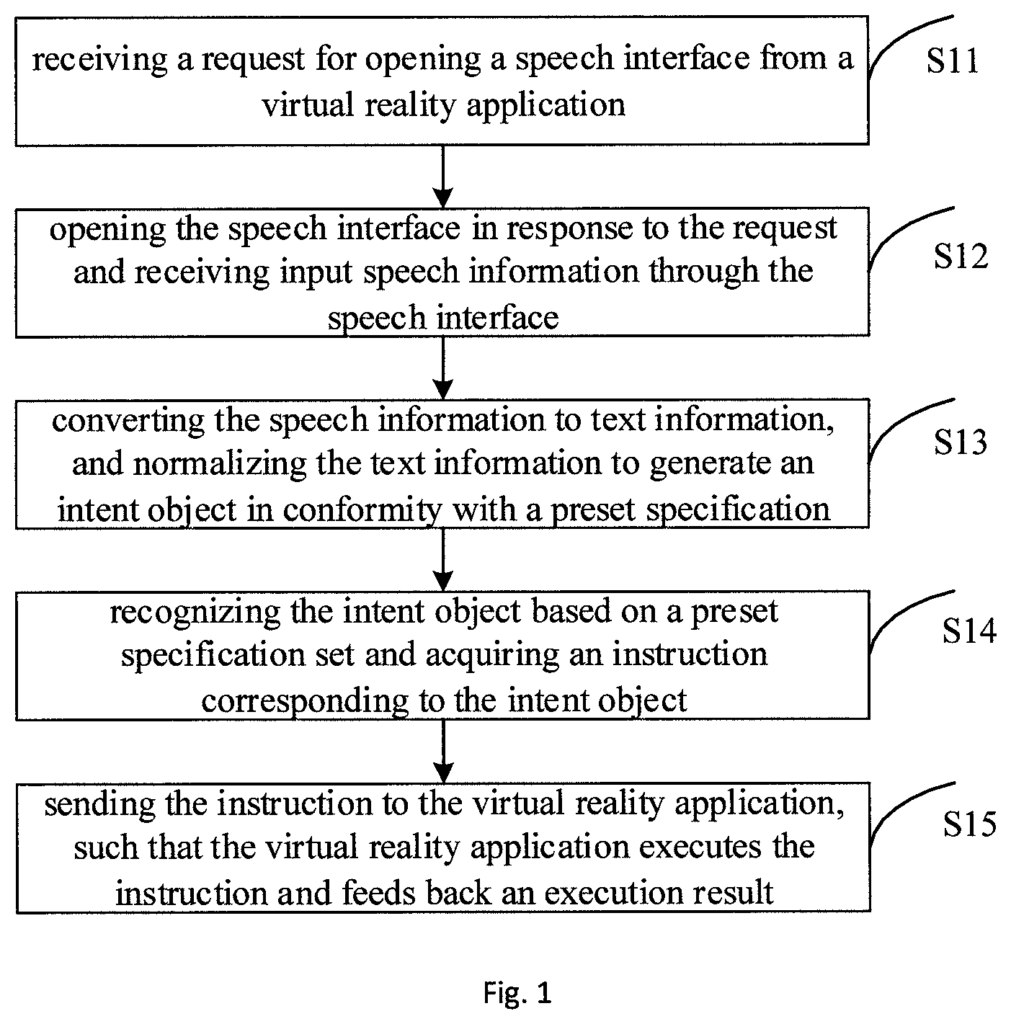
Background for Virtual reality speech control apparatus and method
Virtual Reality (VR) is a computer simulation technology that allows users to interact with dynamic three-dimensional scenes in real time. The system can also feed back to the user the responses in real time.
In virtual reality implements, there are two types of conventional control methods. One is adding a confirming mark in a virtual image. Movements of the confirming marker can be controlled by rotating the head of a user. The other is tracking gestures and movement of the users by a handle or smart glove. In some scenarios, the use of conventional control methods to achieve interaction can result in excessively repetitive operations. This is neither convenient nor flexible, and it can easily cause the user to become fatigued.
The present disclosure is intended to solve one or more of the technical problems above to some extent.
The embodiments according to the first aspect of this disclosure provide a VR voice control method. This includes: receiving a request from a VR app to open a speech input interface; opening the interface and receiving input through the interface; converting speech to text and normalizing text to generate an intention object that conforms to a predefined specification; recognising the intent object using a set of preset specifications and acquiring the instruction corresponding to it; sending the instructions to the VR app, so that the VR app executes
The embodiments of a second aspect provide a VR voice control apparatus that includes: a receiving unit, which is configured to receive the request from the VR application to open a speech input interface; a controlling module, which is configured to respond to the request by opening the speech input interface and to receive input speech through the interface; a generation module, which converts the speech data to text and normalizes it to create an intent object according to a pre-defined specification; an acquisition module, designed to recognize the intent item based on a
Embodiments in accordance with a third aspect” of the present disclosure, provide a terminal that includes: a processor and a memory to store instructions executable by processor. The processor is then configured to perform the following actions.
receiving an open request from a VR app;
opening the voice interface and receiving input speech through the speech interface
converting the voice information into text information and normalizing the text to generate an intention object according to a preset specification
recognizing the intention object on the basis of a predefined specification set, and acquiring an appropriate instruction for the intent item;
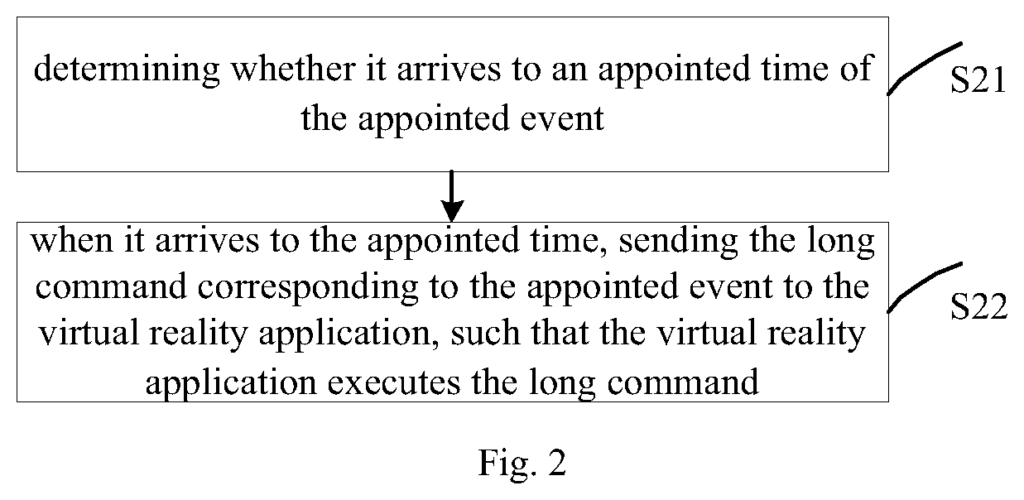
Sending the instruction to the VR app, so that it executes the instructions and returns the execution result.
Embodiments in accordance with a fourth aspect provide a nontransitory computer readable storage medium that can store one or multiple programs. When instructions in the storage medium is executed by the processor of a portable terminal, it causes the mobile terminal to perform a VR voice control method.
receiving an open request from a VR app;
opening the voice interface and receiving input speech through the speech interface
converting the voice information into text information and normalizing the text to generate an intention object according to a preset specification
recognizing the intention object on the basis of a predefined specification set, and acquiring an appropriate instruction for the intent item;
Sending the instruction to the VR app, so that it executes the instructions and returns the execution result.
The present disclosure allows the VR process to be controlled through speech. This eliminates the need for hardware controls and improves the real-time interaction.
Reference is now made to exemplary embodiments. Examples of these are shown in the accompanying drawings. The same or similar elements, and elements with the same or comparable functions, are denoted throughout the description by the same reference numbers. The embodiments described with drawings herein are merely for explanation and to help understand the disclosure. They should not be taken to limit it. The embodiments of the disclosure include all variants, modifications, and their equivalents that are within the scope and spirit of the disclosure, as defined by its claims.
FIG. The flowchart in Figure 1 shows a virtual-reality speech control method, according to a particular embodiment of this disclosure. The embodiment of the present disclosure is described from the Voice Control Virtual Reality System side. VVRS, an application that is installed on a VR device, has functions such as speech recognition, speech synthesis and semantic analysis. It can also communicate with other VR applications. VVRS, for example, may communicate with virtual reality applications to execute operation instructions.
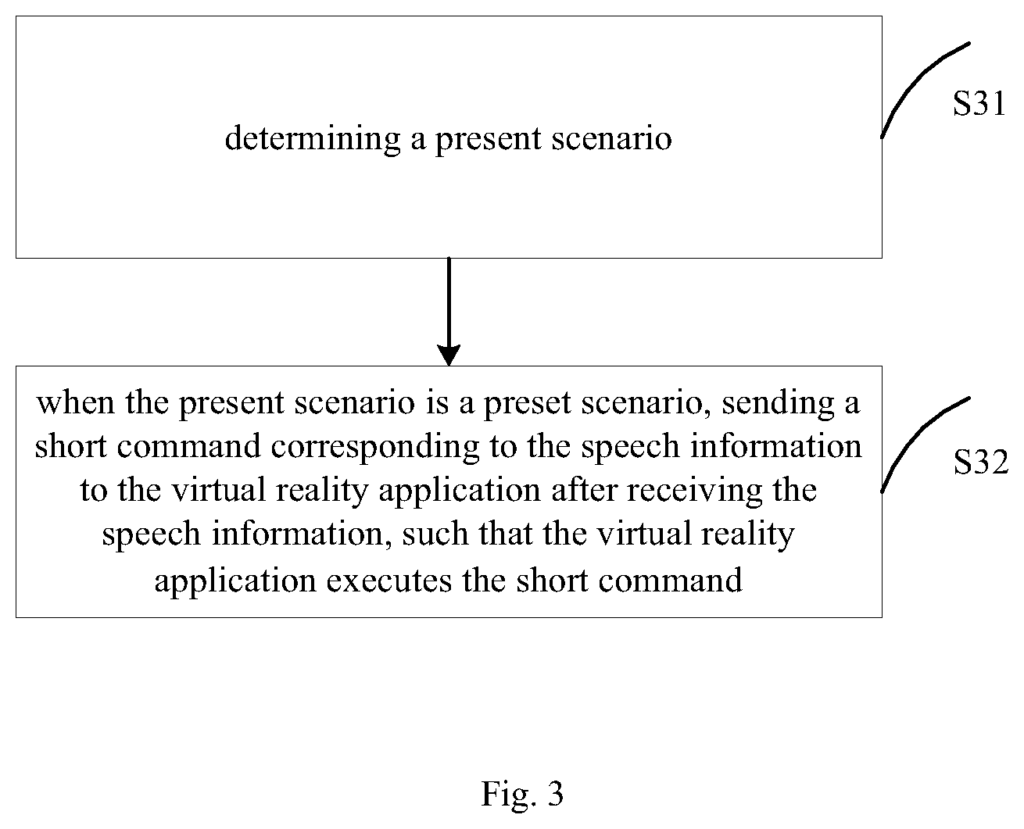
As shown in FIG. “As shown in FIG.
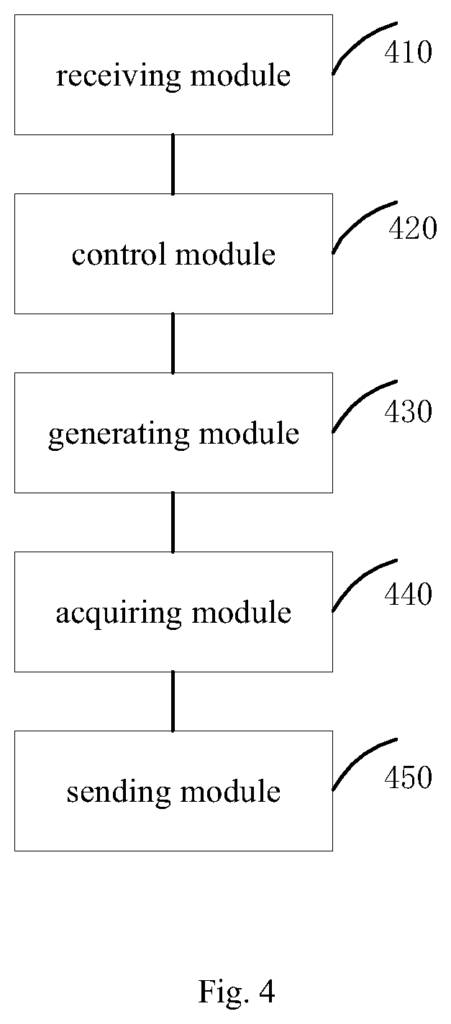
Click here to view the patent on Google Patents.
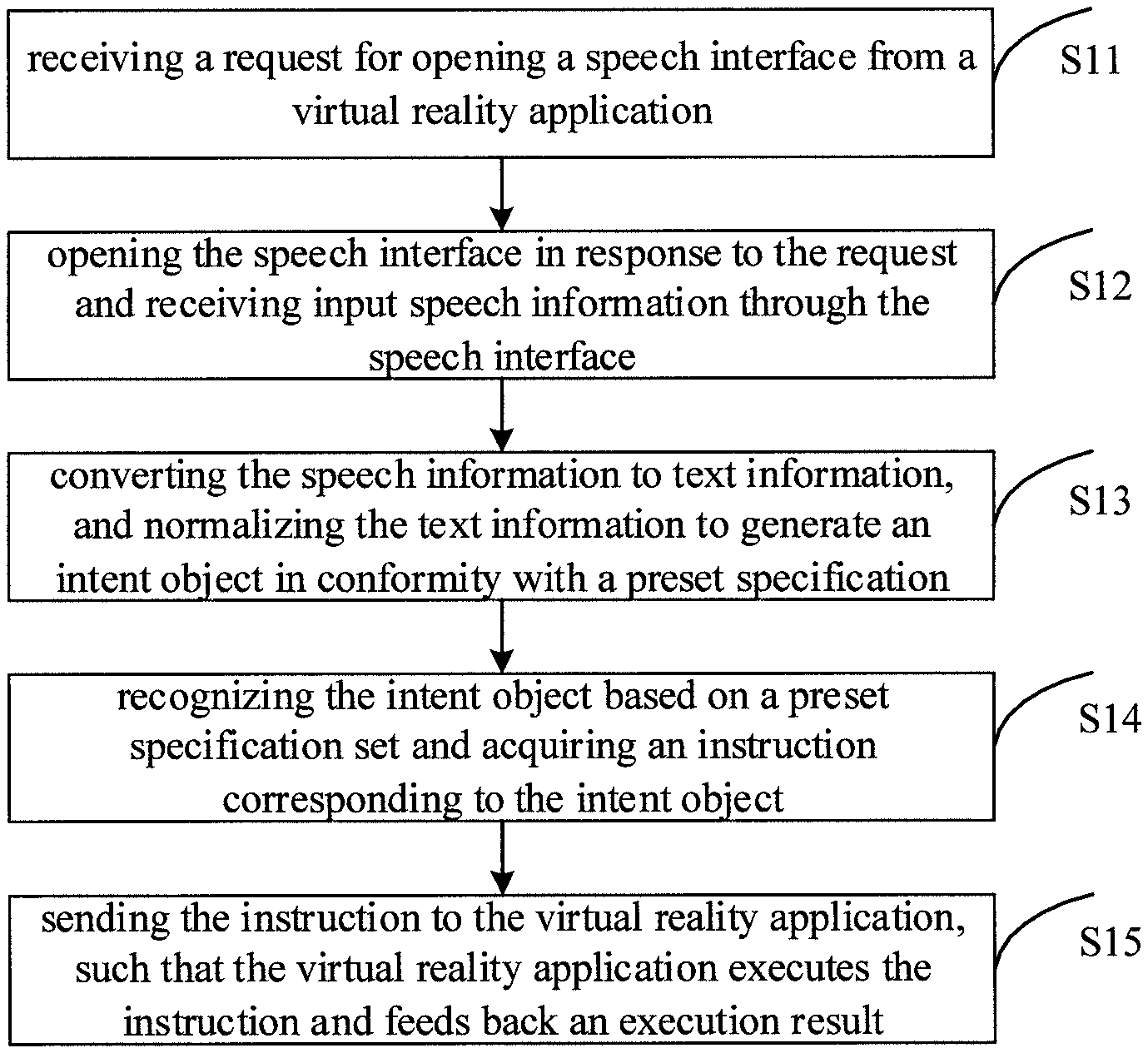
Leave a Reply